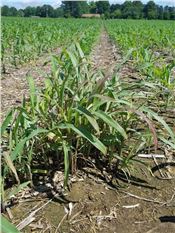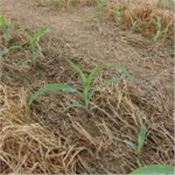Corn Maturity Cutoffs For Herbicides
DR. LARRY STECKEL
JACKSON, TENN.
The corn I have seen in West Tennessee looks, with few exceptions, to be off to a good start. The maturity of our corn crop has some variability due to some fields getting planted in Mid-April with the lion share of acres planted in May .
There have been some corn fields already treated POST, most notably with Halex GT, Capreno, Armezon/Impact. Like most corn herbicides, these work better when tankmixed with atrazine. Unfortunately, for corn that is over 12” tall that is no longer an option. Due to the limited amount of days fit to spray there are a number of corn fields that need to be sprayed where the corn is well over the 12” height restriction. One good substitute for atrazine on large corn which may be tankmixed with some of the premixes is Status. These and other herbicides offer effective postemergence options even on large Palmer amaranth, but there are cutoffs associated with all these.
In fields where Johnsongrass is well established Accent, Steadfast or Liberty (in LL corn only) would be good choices. In field visits this past week, it would appear that glyphosate-resistance in our Johnsongrass is part of the issue (picture above right). In other fields it would appear that antagonism typically from a dicamba product, is causing the glyphosate to be less effective on Johnsongrass. My best guess is the cause of much of the Johnsongrass escapes is a mixture of glyphosate-resistance and glyphosate antagonism as most glyphosate is applied with dicamba.
Crop stage and/or crop height is used to determine the cutoffs for a given herbicide. Often the label states the limits at whichever (crop stage or crop height) comes first. Crop stage can easily be done by counting the number of leaf collars that are fully exposed (ex. 4 collars = 4 leaf). ∆
DR. LARRY STECKEL: Extension Weed Specialist, University of Tennessee

Johnsongrass 20 days after 64 ozs of Halex GT

4 leaf (collar) corn – V4 stage